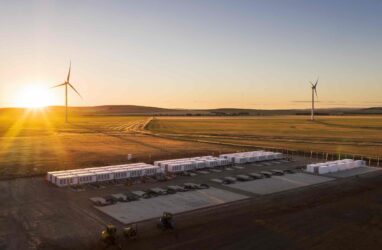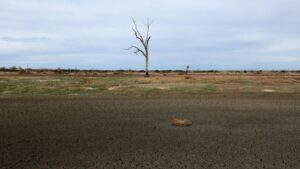
UPDATE: The Australian Energy Market Operator (AEMO) has just announced a groundbreaking roadmap aimed at achieving 100% renewable energy on Australia’s main grids. The initiative emphasizes the critical role of grid-forming battery inverters and household technologies, including solar panels and electric vehicles (EVs).
This urgent update outlines 29 priority actions for the coming year, focusing on enhancing renewable energy penetration beyond last year’s peak of 75.6% into the grid, which also includes the 85.1% achieved in Western Australia’s isolated South West Interconnected System.
AEMO acknowledges that while there have been instances when renewable supply exceeds grid demand, this potential has often remained untapped due to market constraints and operational limits. The organization’s efforts are crucial as the federal government aims for 82% renewable energy by 2030, necessitating sustained periods of high renewable contributions, primarily from wind and solar resources.
“A key priority over the next 12 months will involve advancing understanding of future technology capabilities, including grid-forming batteries to support power system security,” states Merryn York, AEMO’s head of system design. This statement highlights the urgency of integrating consumer energy resources such as rooftop solar PV, household batteries, and smart appliances into the broader energy strategy.
Notably, states like South Australia already achieve 100% renewable energy almost daily, although they can export excess power to neighboring regions. In contrast, AEMO is cautious about extending this capability across the entire grid due to ongoing challenges in providing essential grid services, such as frequency control and system strength, traditionally managed by fossil fuel generators.
The roadmap emphasizes the importance of grid-forming inverters, which are instrumental in managing the stability of the grid as coal-fired power stations retire. AEMO, along with transmission companies, is exploring the potential of large batteries to fulfill these requirements while also performing multiple functions such as energy storage and demand response.
Key priorities include conducting detailed analyses of fault current contributions from grid-forming battery energy storage systems and planning for significant transition points, particularly as coal retirements approach. These transition points will require innovative operational strategies to maintain system security during periods of high renewable generation.
As AEMO prepares for these challenges, the organization is also looking into market settings in Western Australia to ensure operational storage requirements and dynamic load management are effectively addressed. The development of minimum system load services over the past year has been a significant achievement, particularly given the surge in rooftop solar that has shifted traditional energy generation dynamics.
The urgency of these developments cannot be overstated. The transition to a renewable energy future is not just an environmental imperative; it directly impacts Australian households and industries relying on stable and secure power supplies. As AEMO navigates these complexities, stakeholders across the energy sector must remain vigilant and adaptable.
Expect further developments as AEMO’s initiatives unfold, shaping the landscape of Australia’s energy future. The integration of innovative technologies and consumer resources is vital to overcoming the challenges posed by the transition to an entirely renewable energy grid.
Stay tuned for more updates on this pressing issue as Australia moves closer to its renewable energy goals.





